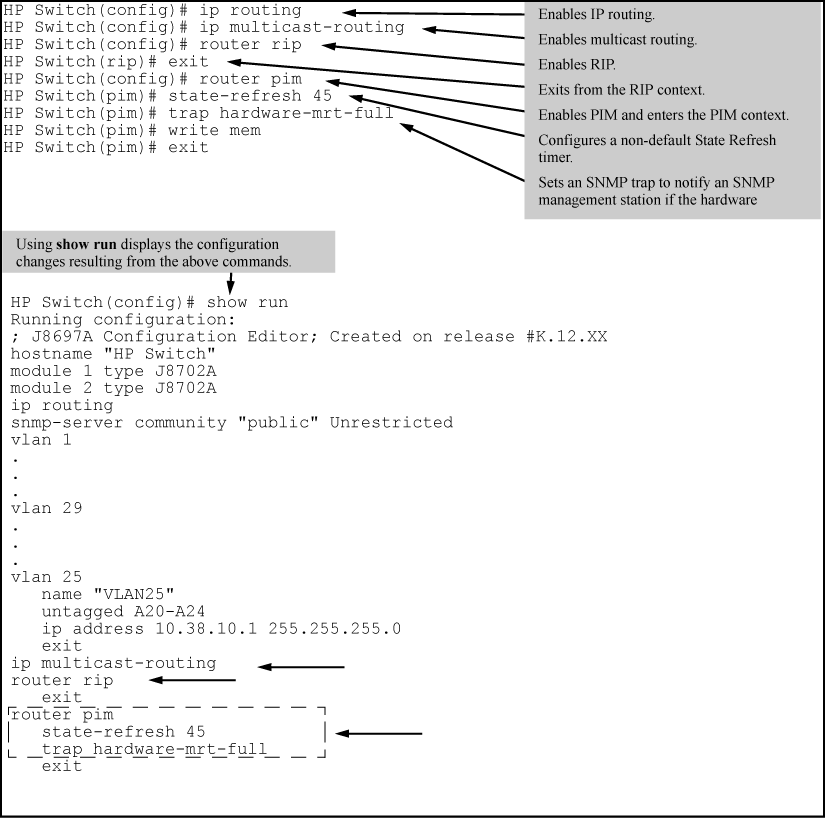|
|
|
![[NOTE: ]](images/note.gif) |
NOTE: PIM-DM operation requires a routing protocol enabled on the routing switch. You can use RIP, OSPF, and/or static routing. The examples in this section use RIP. |
|
|
Syntax:
Executed in the PIM context, this command sets the interval in seconds between successive state-refresh messages originated by the routing switch. Only the routing switch connected directly to the unicast source initiates state-refresh packets. All other PIM routers in the network only propagate these state-refresh packets.
Syntax:
Executed in the PIM context, this command enables and disables these PIM SNMP traps:
Configuring PIM in the Global and PIM context
In Bandwidth conservation in switches with PIM-DM state-refresh, the "#1" routing switch is directly connected to the multicast sources for the network. For this example, suppose that you are choosing the following:
-
Reduce the state-refresh time from the default 60 seconds to 30 seconds. (The routing switch transmits state-refresh packets only if it is directly connected to the multicast source.)
-
Configure an SNMP trap to notify your network management station if the routing switch's hardware multicast routing table becomes filled to the maximum of 2048 active flows.
To configure global-level PIM operation for the "8212zl #1" routing switch, you would use the commands shown in Configuring PIM-DM on a routing switch at the global level.
After configuring the global-level PIM operation on a routing switch, go to the device's VLAN context level for each VLAN you want to include in your multicast routing domain. See PIM interface configuration settings.
